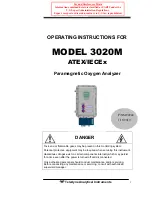
Concepts and features
R&S
®
ZNB/ZNBT
119
User Manual 1173.9163.02 ─ 62
In diagrams, the response values are always represented as points in the two-dimen-
sional complex plane:
●
The complex 0 is located at the center of the diagram.
●
The real part is drawn in horizontal direction, the imaginary part in vertical direction.
Result values for consecutive stimulus values are interconnected by straight lines, so
the trace is represented as a polygonal chain in the complex plane.
The stimulus axis is not visible. However, the stimulus value for a given trace point can
be displayed using a marker.
The difference between the different complex trace formats (
) is the coordinate system that is used for the representation of the response val-
ues and that is graphically overlaid to the formatted trace.
Polar
For "Polar" traces the complex response values are represented in polar coordinates:
magnitude and phase.
In a diagram the grid lines overlaid to the trace correspond to points of equal magni-
tude and phase:
●
Points with equal magnitude are located on circles around the complex 0 that is
located at the center of the diagram.
●
Points with the equal phase are located on straight lines originating at the center.
The following example shows a polar diagram with a marker used to display a pair of
stimulus and response values.
Example: Reflection coefficients in polar diagrams
If the measured quantity is a complex reflection coefficient (S
11
, S
22
etc.), then the cen-
ter of the polar diagram corresponds to a perfect load Z
0
at the input test port of the
DUT (no reflection, matched input). The outer circumference (|S
ii
| = 1) represents a
totally reflected signal.
Screen elements















































